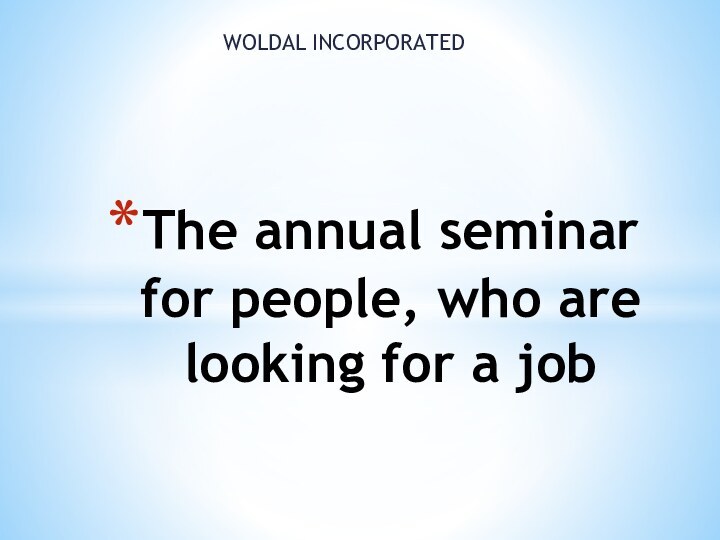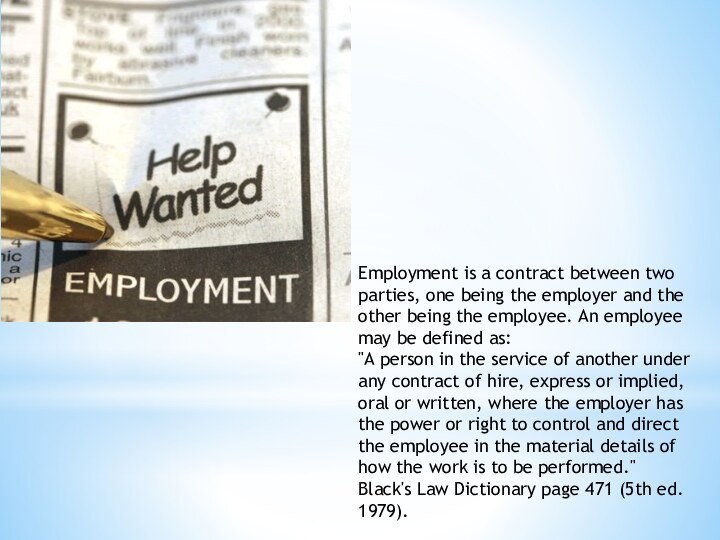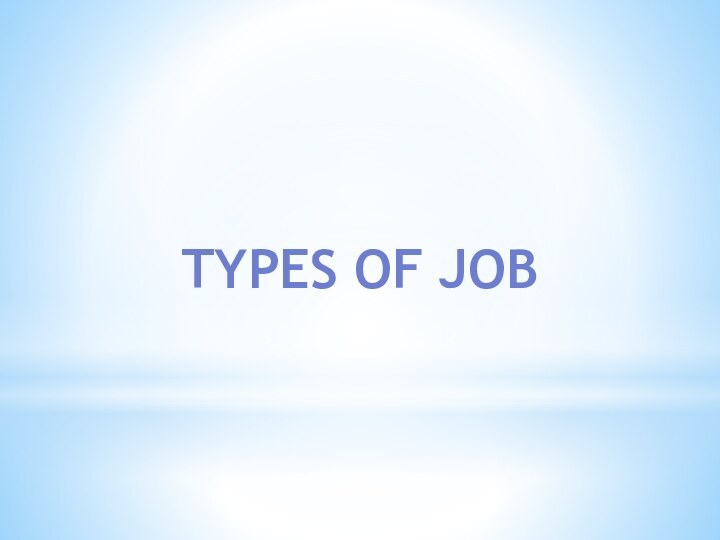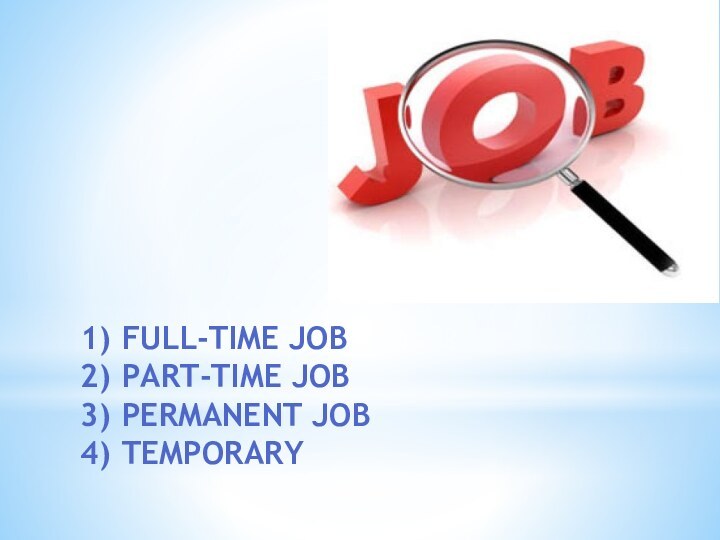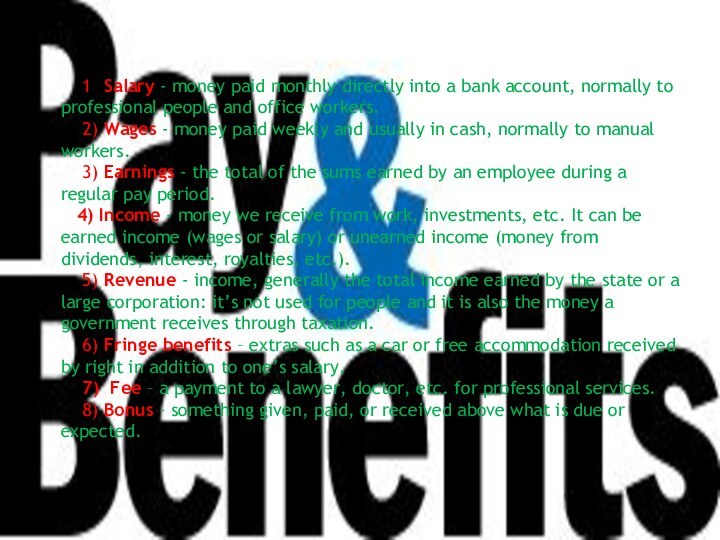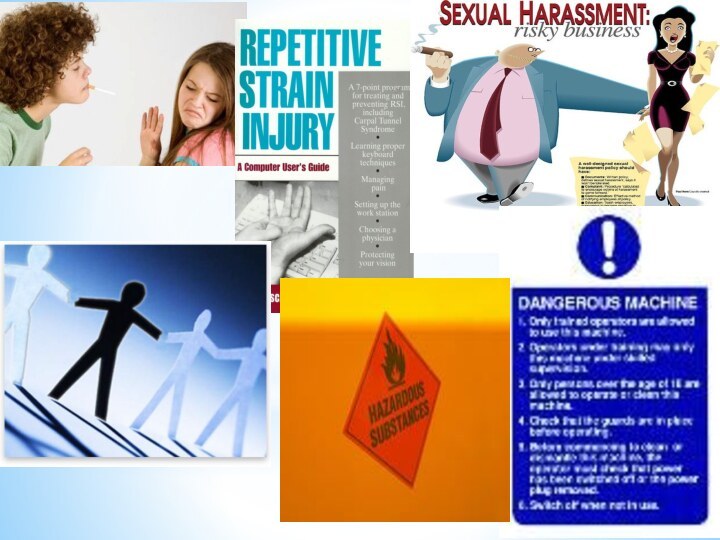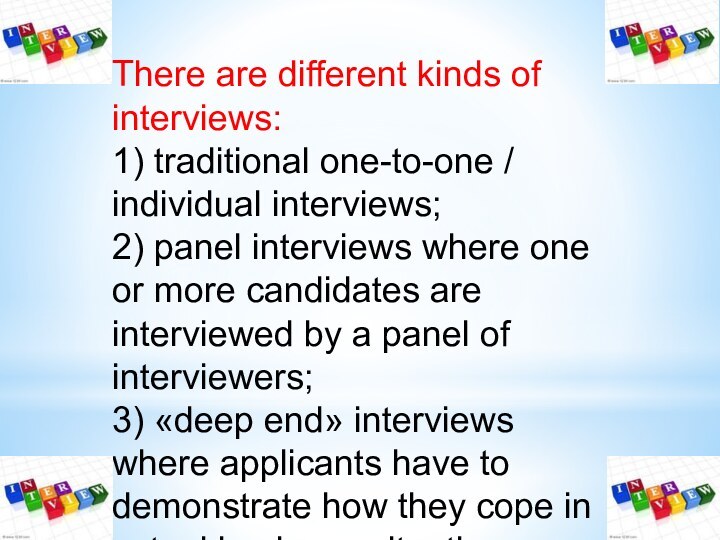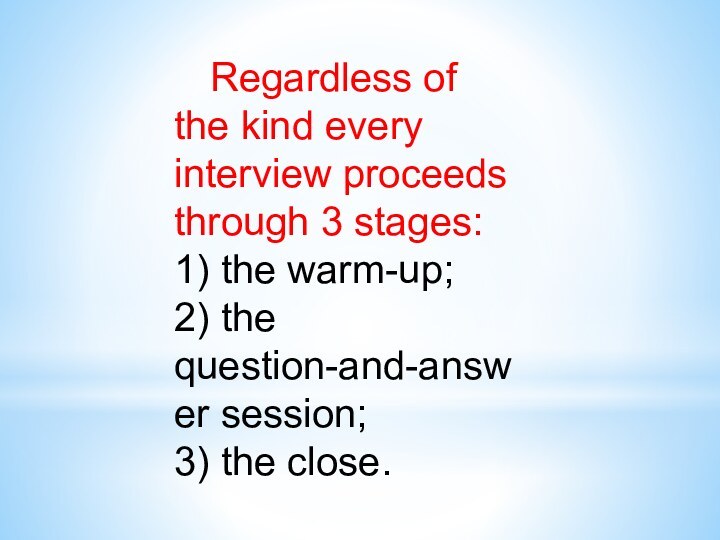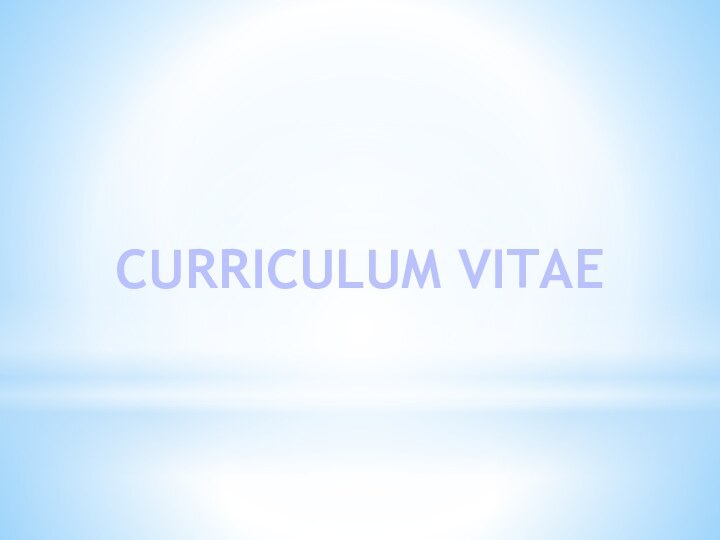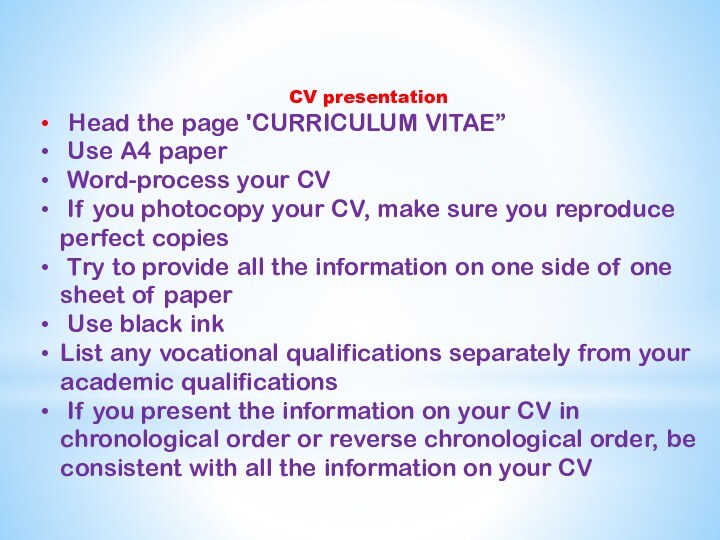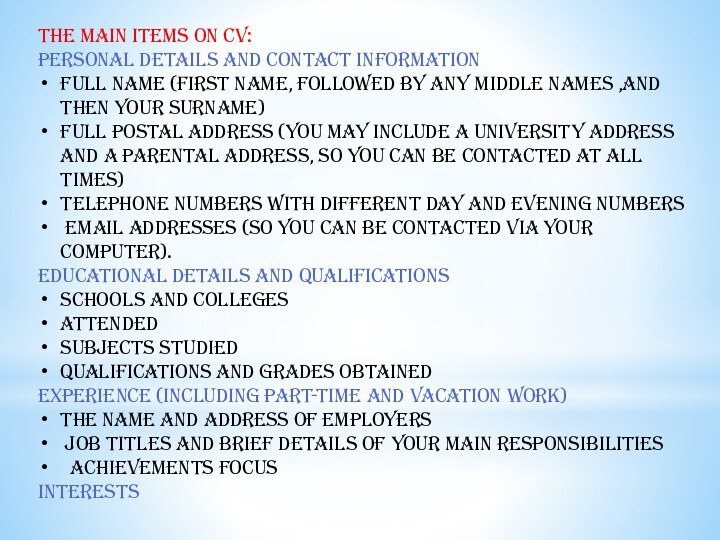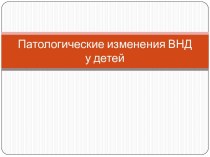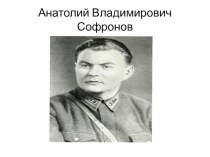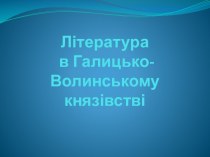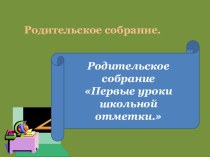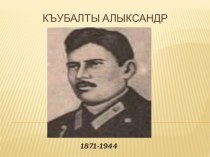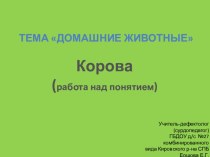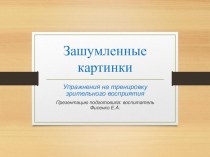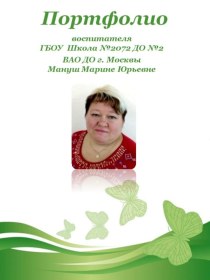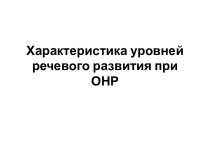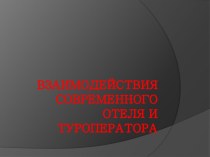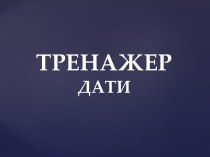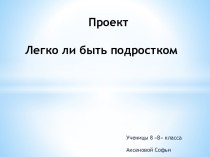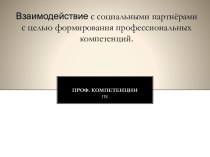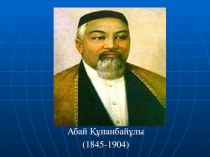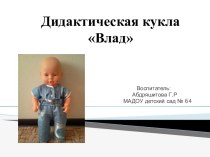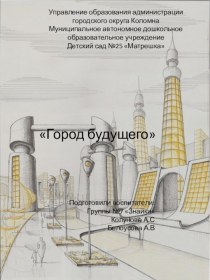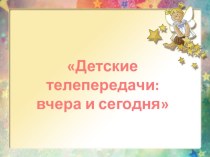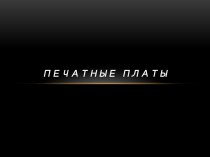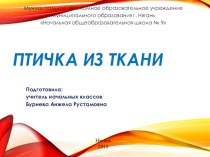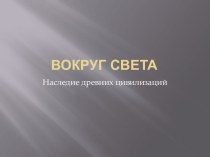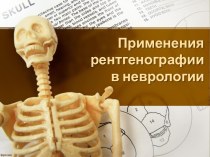Слайд 3
Employment is a contract between two parties, one
being the employer and the other being the employee.
An employee may be defined as:
"A person in the service of another under any contract of hire, express or implied, oral or written, where the employer has the power or right to control and direct the employee in the material details of how the work is to be performed."
Black's Law Dictionary page 471 (5th ed. 1979).
Слайд 5
FULL-TIME JOB
PART-TIME JOB
PERMANENT JOB
TEMPORARY
Слайд 11
Recruitment refers to the process of attracting, screening,
and selecting a qualified person for a job. All
companies in any industry can benefit from contingency or retain professional recruiters or outsourcing the process to recruitment agencies.
Слайд 13
1) Salary - money paid monthly
directly into a bank account, normally to
professional people and office workers.
2) Wages - money paid weekly and usually in cash, normally to manual workers.
3) Earnings - the total of the sums earned by an employee during a regular pay period.
4) Income - money we receive from work, investments, etc. It can be earned income (wages or salary) or unearned income (money from dividends, interest, royalties, etc.).
5) Revenue - income, generally the total income earned by the state or a large corporation: it’s not used for people and it is also the money a government receives through taxation.
6) Fringe benefits – extras such as a car or free accommodation received by right in addition to one’s salary.
7) Fee – a payment to a lawyer, doctor, etc. for professional services.
8) Bonus – something given, paid, or received above what is due or expected.
Слайд 17
There are different kinds of interviews:
1) traditional one-to-one
/ individual interviews;
2) panel interviews where one or more
candidates are interviewed by a panel of interviewers;
3) «deep end» interviews where applicants have to demonstrate how they cope in actual business situations.
Слайд 18
Regardless of the kind every interview proceeds through
3 stages:
1) the warm-up;
2) the question-and-answer session;
3) the close.
Слайд 21
CV presentation
Head the page 'CURRICULUM VITAE”
Use
A4 paper
Word-process your CV
If you photocopy your
CV, make sure you reproduce perfect copies
Try to provide all the information on one side of one sheet of paper
Use black ink
List any vocational qualifications separately from your academic qualifications
If you present the information on your CV in chronological order or reverse chronological order, be consistent with all the information on your CV
